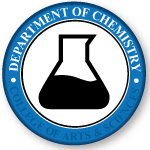Document Type
Article
Publication Date
9-10-2015
Publication Title
Metabolites
Volume
5
Issue
3
First Page
475
Last Page
488
Abstract
Mechanistic insights into the reaction of an estrogen o-quinone with deoxyguanosine has been further investigated using high level density functional calculations in addition to the use of 4-hyroxycatecholestrone (4-OHE1) regioselectivity labeled with deuterium at the C1-position. Calculations using the M06-2X functional with large basis sets indicate the tautomeric form of an estrogen-DNA adduct present when glycosidic bonds cleavage occurs is comprised of an aromatic A ring structure. This tautomeric form was further verified by use of deuterium labelling of the catechol precursor use to form the estrogen o-quinone. Regioselective deuterium labelling at the C1-position of the estrogen A ring allows discrimination between two tautomeric forms of a reaction intermediate either of which could be present during glycosidic bond cleavage. HPLC-MS analysis indicates a reactive intermediate with a m/z of 552.22 consistent with a tautomeric form containing no deuterium. This intermediate is consistent with a reaction mechanism that involves: (1) proton assisted Michael addition; (2) re-aromatization of the estrogen A ring; and (3) glycosidic bond cleavage to form the known estrogen-DNA adduct, 4-OHE1-1-N7Gua.
Recommended Citation
Stack, Douglas E., "Identifying the tautomeric form of a deoxyguanosine-estrogen quinone intermediate" (2015). Chemistry Faculty Publications. 21.
https://digitalcommons.unomaha.edu/chemfacpub/21
Funded by the University of Nebraska at Omaha Open Access Fund


Comments
© 2015 by the authors; licensee MDPI, Basel, Switzerland. This article is an open access article distributed under the terms and conditions of the Creative Commons Attribution license (http://creativecommons.org/licenses/by/4.0/).